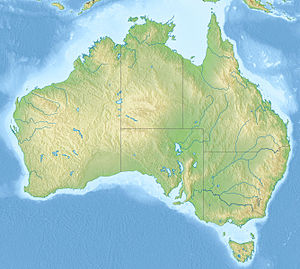Wet Tropics
| Wet Tropics of Queensland | |
|---|---|
| Name as inscribed on the World Heritage List | |

Forest near Daintree. Queensland
|
|
| Location | Australia |
| Type | Natural |
| Criteria | vii, viii, ix, x |
| Reference | 486 |
| UNESCO region | Asia-Pacific |
| Inscription history | |
| Inscription | 1988 (12th Session) |
The Wet Tropics of Queensland World Heritage Site consists of approximately 8,940 km² of Australian wet tropical forests growing along the north-east Queensland portion of the Great Dividing Range. The Wet Tropics of Queensland meets all four of the criteria for natural heritage for selection as a World Heritage Site. World Heritage status was declared in 1988. The Wet Tropics were added to the Australian National Heritage List in May 2007.
The tropical forests have the highest concentration of primitive flowering plant families in the world. Only Madagascar and New Caledonia, due to their historical isolation, have humid, tropical regions with a comparable level of endemism.
The Wet Tropics of Queensland stretches in part from Townsville to Cooktown, running in close parallel to the Great Barrier Reef (another World Heritage Site).
The terrain is rugged. The Great Dividing Range and a number of small coastal ranges, highlands, tablelands, foothills and an escarpment dominate the landscape.
The heritage site contains the northern section of the Queensland tropical rain forests including the Daintree Rainforest. 16 different structural types of rainforest have been identified.
The World Heritage area includes Australia's highest waterfall, Wallaman Falls. In total it spans 13 major river systems including the Annan, Bloomfield, Daintree, Barron, Mulgrave, Russell, Johnstone, Tully, Herbert, Burdekin, Mitchell, Normanby and Palmer River.Copperlode Dam, Koombooloomba Dam and Paluma Dam are found within the World Heritage Area.
...
Wikipedia

